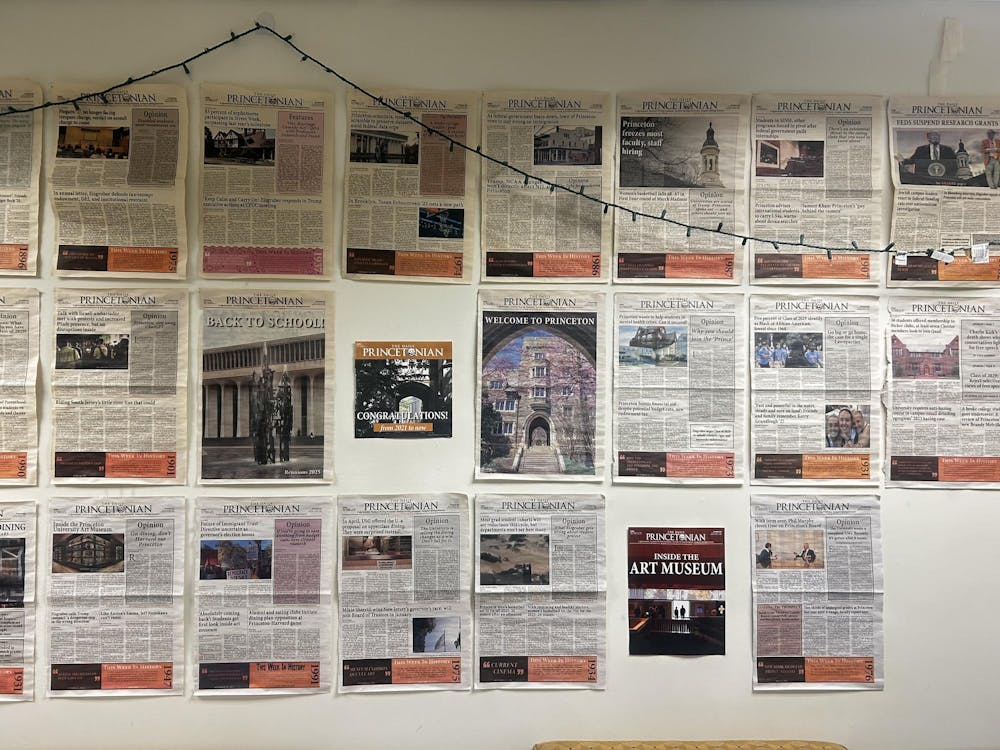Life is more frail than we often perceive.
In moments of grief, this truth becomes particularly palpable. I still remember one such instance from my junior year of high school. As I was leaving school late one Friday afternoon, shuffling across the empty parking lot, I received an unexpected call from my mom. She spoke quietly, as if trying to soften the blow of what was to come: A student I had gone to middle school with had just taken their own life, dying from a self-inflicted gunshot. I sat down in the car. I didn’t know them well, but there is something strikingly raw about the first time you lose someone you considered your peer, something that suddenly makes the fragility of life much more tangible than you ever realized. That night, I drove home and cried in the driveway.
Of course, I do not claim to draw any comparison between my reaction and the devastation that close friends and families of suicide victims experience — that level of personal despair remains inaccessible to me. Yet, simply as two humans whose lives briefly overlapped, this tragedy forced me to consider the way we value life as a society. How, and why, could something like this happen?
The answers here are not as elusive or transitory as you may think, nor are they unique to this situation. Self-inflicted gun death, contrary to the conventional narrative that emphasizes mass shootings, is by far the largest contributor to the public health crisis of gun violence in the United States, with gun-related suicides accounting for a jarring 62 percent of all gun deaths combined. But before this piece is co-opted by opponents of gun restrictions and touted as evidence of the need for mental health reform, let me be clear: The issue here is with the guns.
It is true that mental health plays a discernible role in this issue. However, in terms of actual physical harm, firearms themselves, owing to their lethality, are the overwhelming primary cause of instances of death. There is ample evidence for this. Firearms are used in only 5 percent of all suicide attempts, yet they result in over 50 percent of all suicide deaths per year. This means approximately 85 to 91 percent of gun-based suicide attempts end in fatalities. By comparison, many of the most commonly used methods, such as drug overdose, have a lethality rate below three percent. The presence of guns means that momentary suicidal impulses can quickly and easily turn into irreversible mistakes. This is especially tragic considering that, overall, 90 percent of people who survive suicide attempts do not later die of suicide. In the long term, people are able to recover and rebuild, but the high lethality of firearms means that many who attempt suicide are never afforded a second chance. This is something that weighs heavily on my mind when reflecting on the student I knew. I often wonder if their momentary turmoil was catalyzed by the ready availability of a firearm, with the result of extinguishing a life full of meaning and potential.
So, where does this leave us? We can no longer ignore the huge loss of life occurring in the United States. Thankfully, there are several sensible gun reform policies that address the underlying issues of firearm accessibility and are proven to help curb self-inflicted gun deaths. First and foremost, we should demand nationwide Extreme Risk Protection Orders, which allow for immediate family members and law enforcement to present evidence that a person in turmoil is too dangerous to possess a gun. A judge can then rule for said person to surrender their firearms, thereby eliminating their access to household guns for a short period of time. In Connecticut, which has enacted these ERPO laws, research suggests that from 1993–2013, one suicide was successfully prevented for every 10 to 11 gun removal cases. Secondly, a federal firearm purchase waiting period of several days should be instituted. In the nine states with waiting periods of some kind, these policies have been highly effective. Furthermore, we need nationwide gun lock rules to secure domestic firearms and mitigate teenager suicide. In states where tight gun storage laws exist, one 2004 study showed that there was an 8.3 percent decline in suicides.
Opponents of gun reform routinely label gun-based suicides as purely an issue of mental health and argue, therefore, that gun reform is not necessary or won’t be successful. They say that the majority of these people would find other ways to commit suicide, signaling that a gun is not the defining factor in their death. Surprise — this is a half-baked, empirically false assertion. A recent study in Switzerland concluded that a sustained decrease in the population suicide rate was associated with gun restrictions, and “only about one in five of the prevented gun suicides resulted in a substitution of suicide by other means.” Guns are clearly the factor that precipitates instances of death. Furthermore, gun reform is effective, and victims of firearm suicide should not be painted as lost causes who would have died anyway. They are people who, if not for the presence of firearms, had more than a decent chance at life.
There is nothing crazy about sensible gun reform. The only truly disturbing thing here is that we have let our national gun fetish dominate the conversation on firearms thus far. Even here at Princeton, the anger on this subject is lacking. Especially considering Undergraduate Student Government President Rachel Yee ’19’s push for campus mental health reform, we should be particularly attuned to this national epidemic. The pervasiveness of guns poses a uniquely potent threat to the sanctity of life. We can either choose to flippantly blame mental health for firearm-based suicides, or address the core issue of gun accessibility. If we have any respect at all for the 20,000 annual victims of firearm suicide in our country, or for ourselves, we should be utterly incensed. Now is the time to push for change. Do not sit idly by — get involved, sign up to participate in future events with Princeton Against Gun Violence, call your legislators, and come protest with us on March 14th.

Benjamin Bollinger is a first year from Morristown, N.J. He can be reached at bjb4@princeton.edu.








